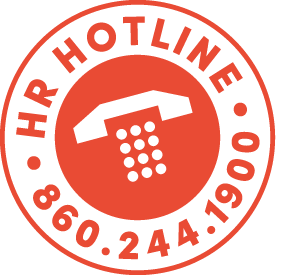HR Hotline: What Constitutes Job Abandonment in Connecticut?

Q: An employee was AWOL for three days in a row, which constitutes job abandonment/voluntary quit according to our company policy. As a result, we let him go. Now he’s been awarded unemployment benefits. Where did we go wrong?
A: Three strikes and you’re out…we’re talking baseball, right? But on the job?
 It is legally permissible and fairly common for companies to tell employees who are absent without notice for three days: “You’re out—permanently!”
It is legally permissible and fairly common for companies to tell employees who are absent without notice for three days: “You’re out—permanently!”
However, that employee will likely collect unemployment benefits while looking for another job.
Under Connecticut law, three days of “no call-no show” does not constitute a voluntary quit that would disqualify the absent, noncommunicative worker from collecting unemployment benefits.
A voluntary quit will only be found where an individual specifically and intentionally terminates his or her employment.
Merely failing to report to work without notice to the employer is not considered a sufficient indication of a worker’s intent to leave a job, i.e., a voluntary quit.
In a burst of clarity, the state Employment Security Board of Review stated in a 1997 decision, “…although there was no per se rule, a 30-day absence without notice would likely constitute job abandonment.”
‘Three Separate Instances’
Subsequent changes to state unemployment law have eliminated the dilemma of deciding just how long someone must be AWOL to constitute job abandonment.
Instead, being absent without notice is deemed misconduct, but a worker must be a no call-no show for three separate “instances” in a 12-month period to be guilty of wilful misconduct, and thereby denied unemployment benefits.
The incident triggering the discharge must be a form of wilful misconduct.
"'Wilful misconduct' means an employee must be absent without notice to the employer which the employee could reasonably have provided under the circumstances for three separate instances within a 12-month period.
"Each instance in which an employee is absent for one day or two consecutive days without notice constitutes a 'separate instance.'"
To illustrate: An employee is no call-no show on Monday = one instance; reports for work on Tuesday, but is no call-no show again on Wednesday = second instance; no call-no show again on Thursday = still only second instance; no call-no show on Friday = third instance = wilful misconduct; unemployment denied.
But, be careful. The incident triggering the discharge must be a form of wilful misconduct.
A worker guilty of no call-no show for three or more instances in the past 12 months who is fired one day for merely doing his job poorly will likely receive unemployment benefits, since the triggering incident, poor performance, was not a form of wilful misconduct.
HR problems? Email or call Mark Soycher at the HR Hotline (860.244.1900) | @HRHotline
RELATED
EXPLORE BY CATEGORY
Stay Connected with CBIA News Digests
The latest news and information delivered directly to your inbox.



